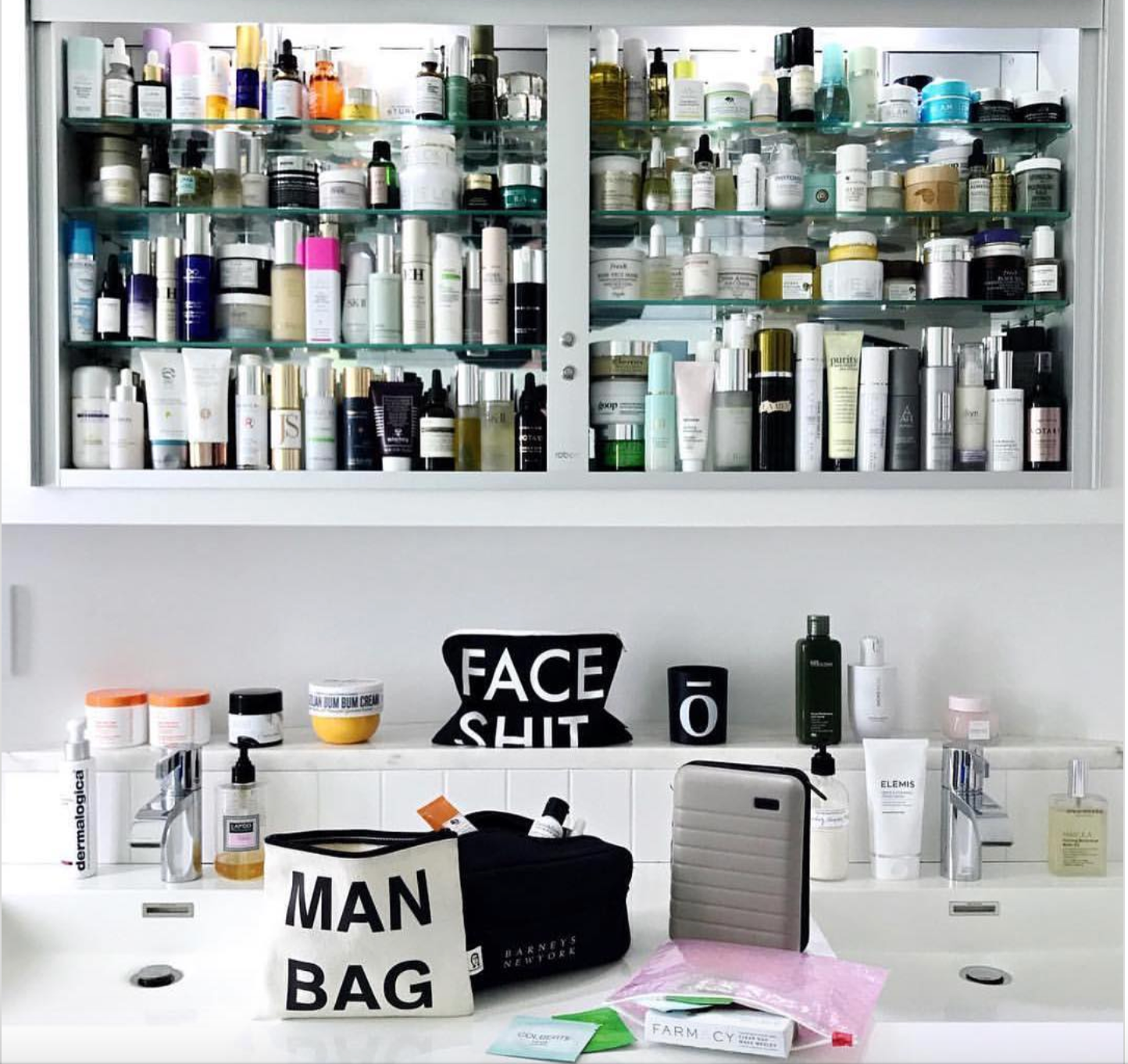
Well-lit, surprisingly large spaces in which every possible surface is covered in flawless white marble. Diptyque candle jars, their waxy remnants scooped out, used to hold assortments of lipsticks and makeup brushes. A mirrored tray with just the right assortment of jewelry, perfume bottles, and cosmetics. A hanging plant — or three! — above a white clawfoot tub, fronds dipping just low enough to make you wonder if their owners can reach up and touch them while bathing.
Recognize any of these bathroom decor and storage trends? If so, that’s likely because each is ubiquitous on the influencer-driven beauty site Into The Gloss — the precursor to an editorial arm of the cosmetics company Glossier — and The Coveteur, another popular site that regularly features the bathrooms, beauty routines, closets, and homes of the hip, wealthy, and well-connected. The point of these franchises is to document the beauty and shopping rituals of a certain breed of cool-yet-relatable woman — you know, inasmuch as model-slash-DJs, fashion entrepreneurs, and people with last names like Getty and Vreeland are “relatable.” But they have simultaneously, and probably inadvertently, perpetuated a highly specific interior design aesthetic that, over the past few years, has begun to show up everywhere. You may have even adopted it yourself.
While both the look and its popularization via social media are quintessentially millennial, the concept of a bathroom as both an articulation of the self and a site for women’s self-care is far from new. The notion of a woman having a room devoted to pampering and beautification dates back around 50 BC when Cleopatra is said to have had a such a space, complete with a marble tub for her milk-and-honey baths. Marie Antoinette, of course, also had one. But it's probably most heavily associated with Old Hollywood, though the aesthetic back then — large bulbs surrounding a mirror, sumptuous fabrics, saturated colors — is much richer and more overtly feminine than todays. More recently, famed interior designer Martyn Lawrence Bullard coined the term “glam room” to describe the over-the-top bathrooms and bathroom-adjacent spaces where famous women, including, apparently, first lady Melania Trump, get their hair and makeup done.
Interior designer Chiara de Rege, who worked on The Wing, agrees with Okin that the Into The Gloss aesthetic has played an increasingly central role in how the women she works with conceive of their bathrooms. But, she says, for many of them, the budget is still the primary concern.
“My clients often pin bathrooms from these sites for mood or inspiration. What’s interesting is that sometimes the inspiration isn’t actually that over the top. It might look it, but often it’s just really chic ways to reinterpret budget-friendly solutions,” she tells Refinery29, noting that, when she was working with the team at The Wing, “our inspiration was more budget-related.”
De Rege is correct that this look — or, at least, a version of it — is somewhat easy to recreate on a budget, thanks in large part to the fact that it’s so minimalist. Perhaps this fact helps account for its immense popularity. Thanks to the bastion of democracy that is Instagram, there’s plenty of evidence that women around the world are not only gravitating towards this specific look but taking it upon themselves to share their bathrooms with the wider world. The hashtag #TopShelfie — a phrase coined by ITG — reveals over 16,000 posts, while #ITGTopShelfie has upwards of 33,000, many from regular users unaffiliated with the brand who are nonetheless eager to share their version of minimalist-luxe bathroom glamour.
All of this begs the question of which came first: The aspirational bathroom or its ultra-specific aesthetic? Neither Into The Gloss, Glossier, or The Coveteur responded to requests from Refinery29 for comment on this story — we’d have loved to have asked them if somehow, all of the women they profiled in the early days happened to share the same interior designer, or whether they sought out women whose homes looked vaguely similar to one another. But all it takes is a deep-dive into the archives of the sites to glean that this has, in fact, been the style they’ve been pushing since the get-go. And yet, these are presumably just the bathrooms their chosen subjects happened to have.
While the desire for a bathroom that doubles as a lounge, vanity, and even greenhouse seems here to stay, there’s a sunset for all aesthetic trends, even those that have pervaded for the better part of the past five or so years. We’re finally seeing a shift away from minimalism (not to mention millennial pink), both in fashion and in the world of interiors. What’s more, certain hallmarks of the ITG look have begun to feel cliche. I say this as someone who recently finished a Diptyque candle, considered cleaning it out for use as a bathroom storage vessel, then thought the better of it. Instead, I allowed my boyfriend to turn it into a makeshift ashtray, which I think is pretty much the antithesis. I feel like, at this point, I’d rather come up with my own cutesy storage hacks than steal one I've seen in every influencer's bathroom.
“What I think is different now is that more and more women aren’t so interested in having a formulaic kind of bathroom,” de Rege posits. “They are interested in infusing personality into these spaces and stories and layers with unexpected materials, colors, pattern, and art.”